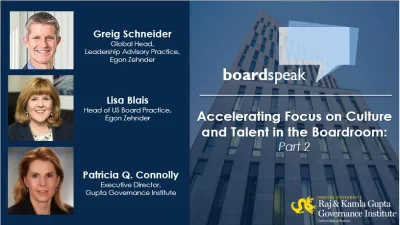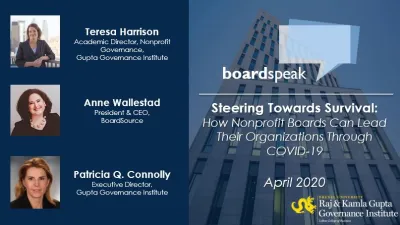
How to Be an Effective Leader
Article by Stan Silverman
Much has been written about what makes an effective leader and the difference between a leader and a manager. Most leaders are also managers, but not all managers are leaders. “Manager” is a job title. You earn the title “leader” from the people you lead.
I have worked for some very effective leaders who have inspired me and my colleagues to achieve beyond expectations. I have also worked for so-called leaders who were not very effective. I have learned much from both. Thinking about my experiences, effective leaders will do the following:
Establish the right tone at the top and institutional culture
Tone at the top encompasses the ethical standards to which CEOs hold themselves and their employees accountable. Institutional culture encompasses the values by which employees conduct business, as well as interact with each other and the organization’s stakeholders. As leaders, our responsibility is to establish the right tone at the top and institutional culture. Without the right tone and culture, the organization faces legal liability and reputational risk, and your employees will not have the right ethical compass to guide their own behavior.
Choose the right team
These leaders surround themselves with the team that will help make the vision a reality, and inspire their team to achieve it. Effective leaders and team members challenge each other’s paradigms, which leads to out-of-the-box thinking. The team helps further define the vision and participates in setting goals. When all team members feel a sense of ownership in achieving the vision, there is a high probability that it will be achieved.
Effective leaders are focused on achieving results through others, and understand that having the right people on the team is of critical importance for success. They understand that a vision cannot be achieved without people who have good critical judgment, interpersonal skills and are effective leaders in their own right.
“Leaders” who do not have the trust and confidence of the people they lead need to understand why and take corrective action. Organizational units not properly led will not achieve their goals. Don’t tolerate a tyrant who works for you. They cause damage to the organization in so many ways. If they don’t immediately change their management style, they need to be terminated.
Communicate the vision, mission and goals of the organization
Your employees can’t help fulfill the vision and achieve the mission and goals of the organization unless they know what they are. Communicate these to them and why they were chosen. Work to gain buy-in from your employees to achieve the shared vision, mission and goals. If this is the year to rewrite the vision/mission statements, involve employees at various levels within the organization. Set joint goals with your direct reports so they have ownership in them. Periodically update employees on the progress of the journey to achieve the organization’s vision, mission and goals.
Let your employees know what their role is on this journey. As CEO of my company, I once told an operating division of a mature business that their role is to generate cash flow that could be invested in high-growth businesses in other parts of the company. I also told them that they needed to continue their successful efforts on continuous improvement, and they would continue to receive capital for process-improvement projects that had an attractive return on investment. These employees shared with me that it was the first time that they were ever told what their role was in the company’s growth. They embraced their role and fulfilled their job as a cash-generator with newfound dedication.
Listen
Listen to other ideas and points of view, and be open to views contrary to your own. Leaders do not have a monopoly on good ideas. For example, if you think the organization should pursue Strategy A on an issue and one of your direct reports thinks Strategy B is the way to go, discuss the issue and test A and B against each other. At the end of that discussion, one of three alternatives will rise as the best strategy: A or B; or in many cases, you will discover Strategy C, which is better than A or B. You discovered C only because you debated the issue.
In my experience, when we followed this process, we rarely made a mistake. The probability of success of pursuing a strategy is higher when alternatives are openly explored and tested against each other.
Empower employees to create an ownership culture
Empowered employees have a sense of ownership in what they do for the organization. I was taught this by an hourly plant worker when I was president of the Canadian subsidiary of my company. These employees are energized and will continually improve their area of responsibility. They feel they are trusted by their leadership. Effective leaders gain power by sharing it, through empowering others. When employees are empowered, trusted and have a sense of ownership, great things will happen!
You earn the title “leader” from the people you lead.
Guard against suboptimization
Too many organizations are siloed, and some leaders suboptimize by maximizing the results of their own division/department at the expense of maximizing company results.
Reward leaders who maximize the results of the company first, and then their division. The stockholders only care about company results, not division results. Reward your direct reports who are team players and who help others succeed. Ensure that your compensation system permits leaders to differentiate employees based on their performance, and handsomely reward your star performers.
Lead how you would like to be led
Establish goals with your direct reports and ensure they know what your expectations are. Let them know that their performance will be assessed not only on achievement of those goals, but also how they lead their direct reports and create future leaders of the organization.
How many of you have heard leaders refer to their organization as great? This is for third parties to decide. Achieving greatness is a journey. Once you think you are great, you have nowhere to go but down. Every organization should always be on a journey to achieve greatness. It is a journey that never ends.
Effective leaders are inspirational, and they are great role models. Count yourself fortunate when you work for one. You will learn much. As you develop and refine your leadership style, be sure to carefully and intentionally choose the leaders you surround yourself with. When you seek out those who have truly earned the title of leader, your own journey to the top will be richly enhanced.
Focus on continuous improvement
Effective leaders know how to achieve operational excellence, and they embrace continuous improvement. These leaders never micromanage, and let their people do their jobs and hold them accountable for results. They ensure their people have access to both the financial and human resources they need to get the job done.
Stan Silverman is a writer, speaker and adviser on effective leadership. He earned a BS in Chemical Engineering in 1969 and an MBA from Drexel University in 1974. He is the Leadership Catalyst at Tier 1 Group, a firm of strategists and advisors for pre-eminent growth. Silverman is vice chairman of the board of Drexel University and former president and CEO of PQ Corporation.
Follow on Twitter: @StanSilverman Connect via LinkedIn: Stan@SilvermanLeadership.com
This piece is adapted from articles Silverman wrote that first appeared in the Philadelphia Business Journal.


